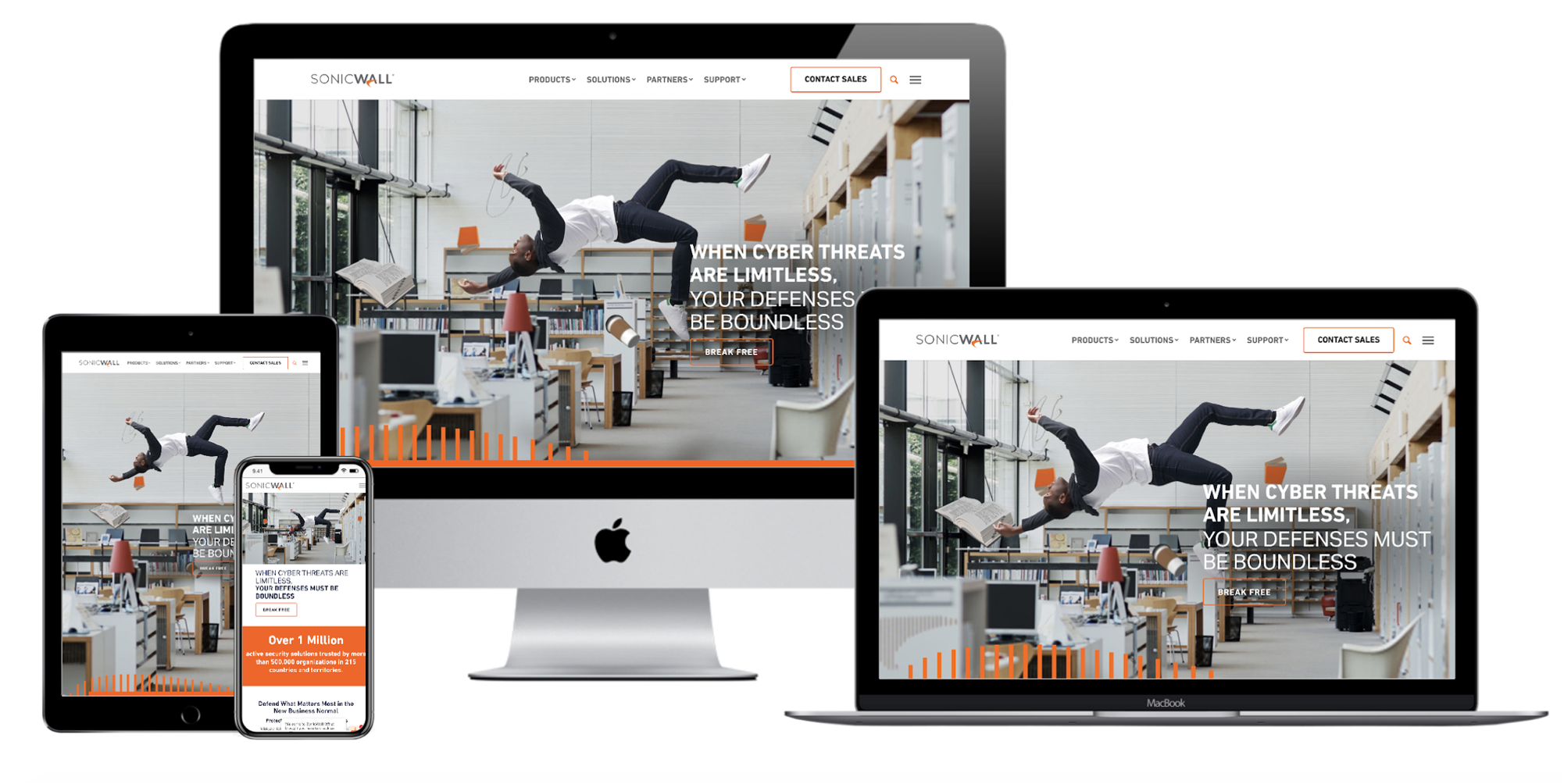After crafting the perfect campaign, ad creative, and hook-worthy copy, there is nothing more frustrating than a user coming to your website only to leave after a few seconds.
In order to prevent those high bounce rates and low clickthrough rates, you need to set up engaging and informative landing pages that lead visitors to the actions you want them to take on your website. It’s not an easy task, but thankfully digital marketing agencies, such as Bluetext, have experience and tips to share. Let’s look at five ways you can master the art of the landing page.
1. Emphasize Calls to Action
As this Elementor article states, “Unlike most webpages, landing pages often actively discourage exploration in an attempt to push visitors toward the CTA.” The whole goal of your landing page will be to push your users to a certain action or link, so make sure you place CTAs throughout your landing page to encourage clicks as the user scrolls. Also, be certain the CTAs are the most prominent component of your landing page, by color, placement, or other characteristics, they need to stick out to grab visitors’ attention and entice click-throughs. Also consider adding sticky CTA menus that follow the user down the page, enticing them to click-through at any time during their experience with your site. Some top placements of sticky CTAs lock onto the right-hand side or directly under the main menu navigation.

2. Think Through Your First Viewport
When a user first appears on your landing page, they are looking for an immediate answer to their question. Every one of us has looked at a website for all of one second before exiting because we could not immediately find the information we wanted or perhaps there was too much text to read through.
Make sure that you use that first viewport wisely to start appealing to user needs. Have informative, relevant headlines, eye-catching images or video, and helpful secondary text. All of these pieces will go a long way in convincing your users to continue to scroll, and eventually click that CTA button.
3. Write Intriguing Copy
If you can grab your visitor with their first look at your landing page, you’ve already overcome a significant challenge of landing pages. However, now you need to sustain that attention. It’s a tricky maneuver, balancing providing immediate information while also ensuring they absorb additional details. Give everything away at once and the user never interacts further with your website, but tease it out too long and you risk users bouncing off the page. Digital marketers recommend to not overwhelm the user with small, dense text but instead offer answers to their questions. Additionally, psychological elements can be used to reach your visitors and convince them to use your CTAs. By the time someone finishes reading your landing page, they should have a clear idea of why your product or service will give them the best solution to their problem.
4. Optimize for Search Engines
You may have the most magnificent landing page in the world, but that does nothing if people can’t find it. Using keyword phrases and writing rich meta descriptions is an important part of SEO for a successful landing page. By getting to the top 20 results of Google (or in the first two pages of results), the chances of someone actually seeing and clicking on your landing page rise substantially.

5. Design with Your Users in Mind
As with any page, design can make or break your user experience. As you write copy, consider what information is most important to the user and needs to be emphasized in valuable H1’s and H2’s, think about which details could be shown in more interactive formats, and choose media that adds to instead of distracts from your main purpose. You also need to ensure that your landing pages are fully accessible for all your potential users.
A great example of a compelling, successful landing page comes from our campaign with Varonis. Bluetext worked with Varonis to create ads that drove viewers to landing pages and CTAs. By targeting the right audiences and leveraging intriguing copy, Bluetext helped Varonis grow its click-through rates above the industry benchmarks.

Want to learn more about creating successful landing pages or are interested in working with Bluetext to create a successful, data-driven landing page strategy? Contact us today.
Whether you’re creating your first logo, editing an existing logo, or totally redesigning an outdated logo for your business, you’ve been tasked with representing your brand and everything it stands for within a small graphic icon. A logo design project requires extensive knowledge of what your business stands for, what your current competitors are doing, and how design principles can be applied to capture attention and promote memorability. To increase the likelihood of a successful logo design, many companies turn to digital agencies like Bluetext who understand the competitive landscape and get to know each business in depth before designing a logo that accurately reflects the company and helps them stand out among the competition. The following 4 principles are integral considerations for the logo designing process at Bluetext, and they should be utilized by any company looking to create a timeless, impactful visual identity for their brand.
1. Color
More often than not, color lays the foundation of a brand. Color is the first thing that catches the eye, and in an age of diminishing attention and quick digital scans can make or break a strong brand. With the power to improve brand awareness by more than 75%, color psychology is an essential consideration. Digital marketing & branding agencies advise considering the perspectives of two important players: the end-user and the industry. Below are three critical questions to ponder before any branding objective:
- How do you want to be perceived by these audiences?
- What emotions should your brand evoke from end-users?
- How do I want to compare to industry standards? ‘Zig’ (run with the pack) or ‘zag’ (go against the grain)?
Certain colors tend to dominate different industries. Ever wonder why almost all fast food brand logos use the colors red and yellow? Red elicits passion and energy, while yellow stimulates hunger, which leads to subconscious food cravings. In comparison, the government contracting industry tends to use the colors red, white, and blue to invoke a sense of patriotism. Understanding the emotional impact behind your color choices can help your brand resonate with users and prospects. However, while some colors are tried and true, you should also weigh the costs and benefits of choosing the colors commonly found within your industry. Your ultimate goal should be to stand out amongst the competition, rather than blending into it. Whether or not color palette is the avenue to differentiate is a question that an expert brand agency would be able to consult on. While it may be tempting to utilize numerous color combinations, within your brand and logo, keep in mind the second most important quality of a logo: keeping it simple.
2. Simplicity
Visuals can communicate information 60 thousand times faster than text, a simple visual can be more impactful—and memorable—than a complicated or wordy design. Especially with the rise of mobile users and smaller screens, reducibility is a critical factor. Your logo should be comprehensible across multiple sizes—from a banner ad to a website favicon. Complex, detailed logos often have legibility challenges on small devices, therefore limiting your opportunities to show off even the most stunning designs. When there are too many competing elements of a logo, a viewer’s attention is divided between them, which detracts from their ability to recall the logo as a whole. It’s much more effective to choose just a few key elements of your logo to highlight your brand offerings. A good logo communicates your company’s strengths, whether it’s a rich history, creative thinking, or literal products featured in the design. The devil is in the details, which is why leading brand agencies advise a simple, yet scenic, route to logo success.
3. Adaptability
Another important aspect of your logo is that it must hold up to the test of time. A brand as a whole can be updated and refreshed every now and then, but replacing an outdated logo can be a large undertaking. A timeless logo is one that can be implemented across different formats, from horizontal, vertical, square, black and white, full color, etc. These format variations allow the same logo to be adapted to different contexts as the opportunity arises, whether that be print materials, branded merchandise, and new online formats. Anticipating new ways to use your logo will keep users engaged with your brand as you expand across different platforms. Your brand’s style guide is an important resource for explaining how your logo and brand identity can be communicated through different channels.
4. Relevance
The previous 3 qualities of your logo tie into one overarching factor: relevance. Before considering a logo redesign, you should talk extensively with target consumers to better understand how they perceive your current logo and overall brand. Creating a logo that reflects your brand identity is one thing—making sure that customers actually receive and understand your message and the brand behind your logo is an entirely different challenge. A digital marketing agency can be a powerful partner to compiling market research and getting a third-party perspective on your logo’s effectiveness. To learn more about how to stay in tune with your customers to make sure your branding conveys the value you actually offer, check out an interview with Bluetext’s Jason Siegel and Travelocity’s Terry Jones on avoiding brand regret.
Keeping up-to-date with design trends is one way of reading the market at a broad level to see which logo design techniques are resonating with audiences. However, accurately representing your brand is more important than being trendy. In the cyber-security space, for example, the challenge of selling an abstract concept has led many companies into the trap of using stereotypical imagery or design to try to communicate that they work with computers, coding, and hackers in hoodies. However, following those trends has led many companies to fall into the clutter of the category—a space where they’re practically indistinguishable from competitors. In order to avoid these common mistakes and stand out as strong competitors within your industry, consult a brand & marketing agency for your logo design.
Contact Bluetext to take the first step in setting your brand (& logo) up for long-term success.
Why animation?
As the saying goes, static doesn’t sell. According to research, animated banner ads are more than four times as effective as their static counterparts. More and more these days, users are expecting engaging, interactive content from brands at every point of contact. This goes for any platform—a website, an app, digital out-of-home, social platforms (yes, this means TikTok). Anything with a screen is an opportunity to shake up your brand with animation.
Say more with animated content
If a picture is worth a thousand words, an animation is worth a million. Animated content captures key messages in more ways than a static graphic, and injects any design with the personality of a brand. After all, motion draws out emotion. Whatever your brand wants to convey, animated content can sharpen and elevate that message.
Is your brand a subtle responsive animation kind of brand, or a claymation one? Maybe a blueprint-style animation speaks to your brand’s personality best, or perhaps a parallax effect is the best representation of your brand. However you choose to do it, you can get more out of your corporate visual identity with animation.

Getting started
When it comes to animation, the options are endless. Here are a few simple ways to get started, plus some examples produced by the team here at Bluetext.
1. Introduce an animated version of your logo or key brand assets.
An animated brand identity can be applied across any digital asset, as demonstrated by Octo’s identity in motion. The style of movement captures the ever-changing nature of the government technology market and communicates more about Octo than a static identity could.
2. Add subtle movement to some of the static content on your website.
This example from ScienceLogic is an elegant way to introduce movement to your website while incorporating visual elements like brand shapes and secondary colors. As the mouse hovers over images of the leadership team, the background pops with new colors and shapes to keep the viewer engaged with what they’re seeing.
3. Consider a moving graphic for your next ad placement.
4. Read some more tips on motion integration from Ale Hernandez, one of Bluetext’s web design and UX experts.
Easy animation with interactive AI
Animation is becoming so necessary for modern brands that designers have even begun to automate some of the process. This cutting-edge technology is making animation more cost-effective and efficient to produce, meaning that more and more brands will be able to build out animated identities. Now is the time to get an edge on your competition by debuting a signature animation style for your company’s offerings.
Want to go all-in on animation? Contact Bluetext to learn about our motion design and interactive UX services.
In 2021, the average person will encounter anywhere from 6,000 to 10,000 pieces of promotional content on any given day. Banner ads, billboards, and influencer shout-outs all inundate consumers with information about the products and services they promote. The volume of content is growing, but the audience’s time and attention span are dwindling. Brands today must duke it out in a competitive landscape where attention is a commodity and focused consideration a luxury. So how does a brand break through the never-ending stream of influence that consumers are exposed to? The answer is microcontent.

Microcontent is a self-explanatory term. Content, but smaller. It’s text, video, images, really any form of traditional content that is optimized for social media and can be consumed in 30 seconds or less. The latest trend in content marketing is adapted to the latest platforms, and modern attention spans. Microcontent provides enough time to tell your brand’s story and drive leads without requiring so much committed focus that it loses the attention of hyperactive social media users. It should be something your target audience can engage with, save, and ultimately share with other users in their network. Effective microcontent can stand on its own as a positive user experience, bringing value to the user before promoting brand offerings.
Creating microcontent is simple, as it is built from the pieces of a brand’s existing long-form content. Pull quotes can be made into actionable tips and tricks, key takeaways can be presented as small infographics or formatted lists. These tidbits can be combined with key brand messages to create card carousels that will function as the foundation for a social campaign. The microcontent creation process is all about taking the most critical elements from long-form work and formatting them into an easily digestible package that distills the essence of a brand. The trickier part is getting your microcontent in front of the right users and achieving positive engagements.

The rise of microcontent is not a self-contained trend. It’s part of a growing movement by many brands towards simplification in their messaging and content creation. As humans, we have an innate drive to simplify the complexity of the world around us, a trait referred to as the “Simplicity Principle.” The Simplicity Principle states that when our minds are presented with two options, one complex and one simple, we choose outcomes that we perceive to be as simple as possible. Ever feel overwhelmed by the 6,000+ instances of promotional content you see a day? You’re not alone, the surplus of stimuli actually has adverse effects on consumers and muddles the decision-making process. As technological advances and omnipresent social media platforms continue to make consumers’ lives exponentially more complex, they will embrace simplicity wherever they can find it.
Understanding this fact is more important for brands than it ever has been before. It only takes one look at the latest industry headlines mentioning VOD, AR, machine learning, the growing influence of big data, and countless other kinds of emerging tech to understand how consumers could feel lost. To truly reach and engage with its consumers, a brand must be able to break through the noise of the industry and present them with content that is digestible and impactful. Whether through microcontent creation or streamlining messaging about complex topics, modern brands must focus on being translators of the complex into the simple.
As a full-service digital marketing agency, Bluetext offers multiple services that can help your brand consolidate messaging into impactful and digestible content. Contact us today to learn more about our messaging and content marketing services.
It’s not what you say, it’s how you say it.
You could have the best product in the world, but if your website’s user experience is not up to par, how will customers find and use your product? What’s in your website is important, but how your user interacts with it is even more essential. That is why it is so important to focus on UX when designing, or redesigning, your site.
What is UX?
UX– or User Experience– is how your users interact with and experience your product. While UX can apply to any product or system, from making a call on a cell phone to standing in lines at Disney World, it is commonly associated with digital media. Everyone has had that moment where you can’t find what you need on a website because it is buried so far behind menu items and hyperlinks. With proper UX, though, your users will be able to find everything more easily and therefore be more satisfied with your overall product.

Why is UX Important?
UX is important for a client because it gives them easier access to your products. It is important for a business because happier clients are more likely to return to your business. According to this Inside Design post, “88% of online consumers are less likely to return to a site after a bad experience.”
Thinking specifically about your users’ experiences is also an initial step in helping as many users as possible succeed on your website. As the internet and computer technology have expanded, accessibility becomes easier to implement and more important than ever. Accessible UX will help everyone use your website better.

So how can my company find a way to use UX to the fullest?
The first step to any good user experience design is knowing and understanding your users. After you determine your users, or potential users, your most important task is researching how users interact with your website (or other products). What parts of your website make users love to visit the site and buy your products? What parts of your website are so challenging that users exit the page? How can you make the more challenging parts of your website better and easier for users? In your research about current users and website design, don’t forget to think about your content editors as well. How do your employees add content to the site? Does the backend need improvement as well?
After you have a good understanding of your current website’s strengths and weaknesses, you can move on to thinking about how to redesign your user experience and interface. Consistently refer back to your research to make sure that you are properly addressing user needs. Also, be sure to follow accessibility guidelines even if that did not come up in your specific research (Bluetext’s Aly Gumprich shares some great information about accessible design here!) While brand-new, complex designs might seem fun, it is important to make sure the website is functional and not just visually pleasing (although it should be both!).
Once you complete your redesign, make sure to test, test, test. The whole point of UX is to make sure your website is usable. Have as many people as possible test the website and provide feedback. As you get feedback, use it to make your website even more user-friendly.
A great example of how to maximize innovative, clean design while still ensuring a seamless customer experience is Bluetext’s redesign of the SonicWall website. This redesign highlighted creative elements that matched SonicWall’s brand and mission, but Bluetext also made sure that the website streamlined product information to boost customer satisfaction and make researching and buying products easier. Bluetext also took care of all the details that make a user experience truly great–like fast website speed and an easy-to-use navigation system.
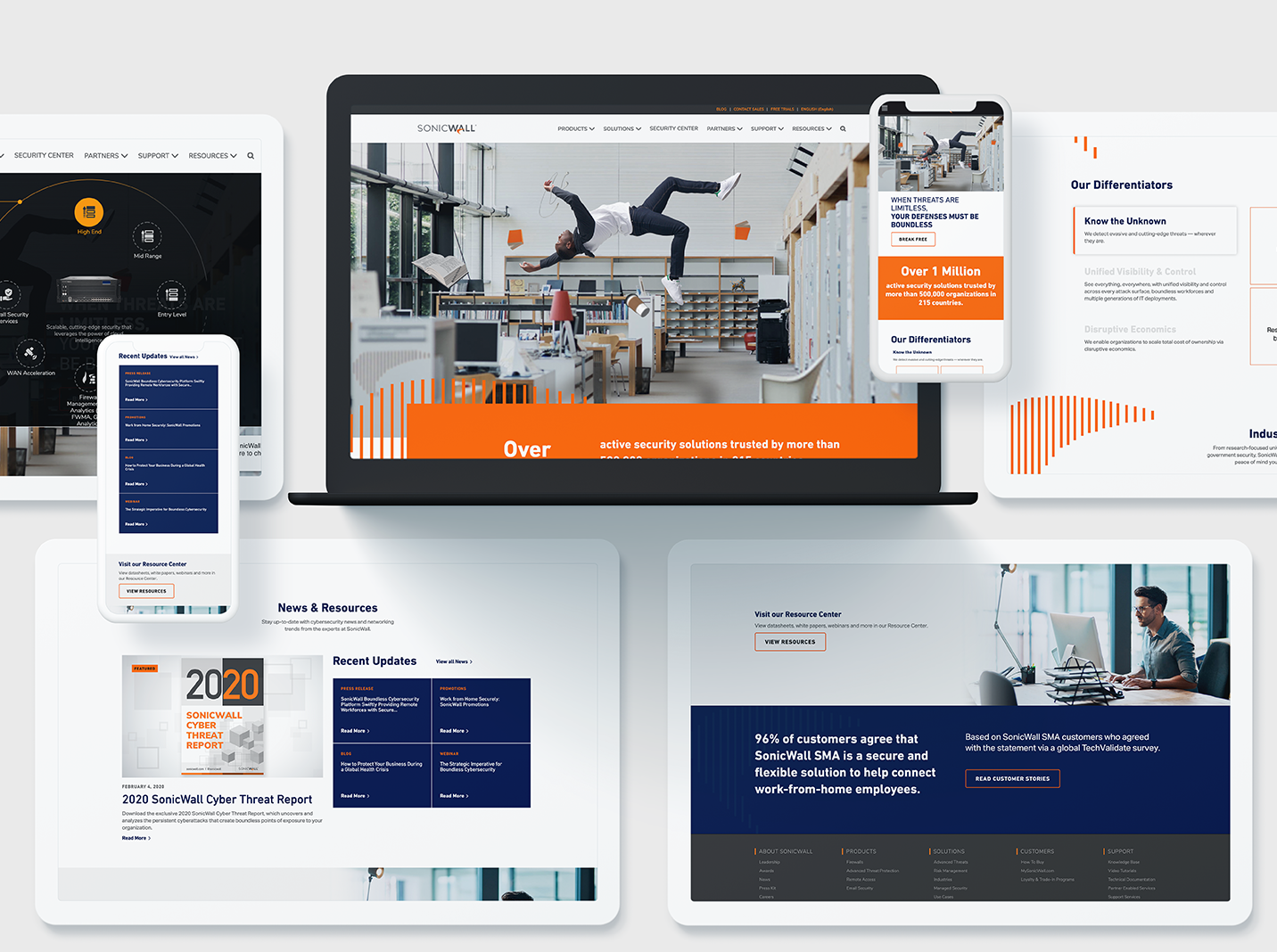
Whether you are updating a current website or completely redesigning, make sure you consider your user experience during every step of your design process to ensure the best site possible!
Need help? Contact Bluetext to get expert support in perfecting your user experience design.
Have you ever navigated to a new website with a question, and spent too much time hunting for an answer? While companies spend large amounts of time developing and building out an information architecture for their user journeys, they may not always have the use case of each unique user in mind. To be fair, they aren’t mind readers! There are times when consumers may simply need to be guided to exactly what they’re looking for – and there is no better way to ensure that than with a chat experience integrated on your site.
As consumer behavior changes over time, it is important to be able to meet your user and provide a user experience that matches what they have become accustomed to. In the same way that it has become the norm to order a pizza online instead of calling into your neighborhood spot, the prevalence of 24/7 support and availability should be captured in the online experience.
With younger generations, in particular, an instant messaging option is a preferred way to communicate, and if companies can make it easier for their customers to get what they are looking for through a chatbot, this will pay off. A recent study found that up to 68% of respondents indicated that they are more likely to use a business that offers convenient communications if they have the option to choose where to make a purchase.

A seamless integration for a chat experience where a bot or a real person responds in real-time is critical. It can be extremely frustrating when users are waiting around for something that should warrant a quick response. Ever been stuck on the phone waiting for hours to get past automated messaging machines to ask a question? It’s incredibly frustrating and more often than not people get impatient and hang up. Online inquiries are no different, if you leave a user aimlessly browsing on their own and unsuccessful in finding their answer they will get impatient and bounce from your site. Installing an automated chatbot gives users a clear destination for their questions, and avoids the dead-end drop-off. While chatbots may not be real people, it gives users the illusion of a more personal experience and grows brand trust that your company is willing to solve their problems. Convenience is key in today’s society, and online browsing is no exception.
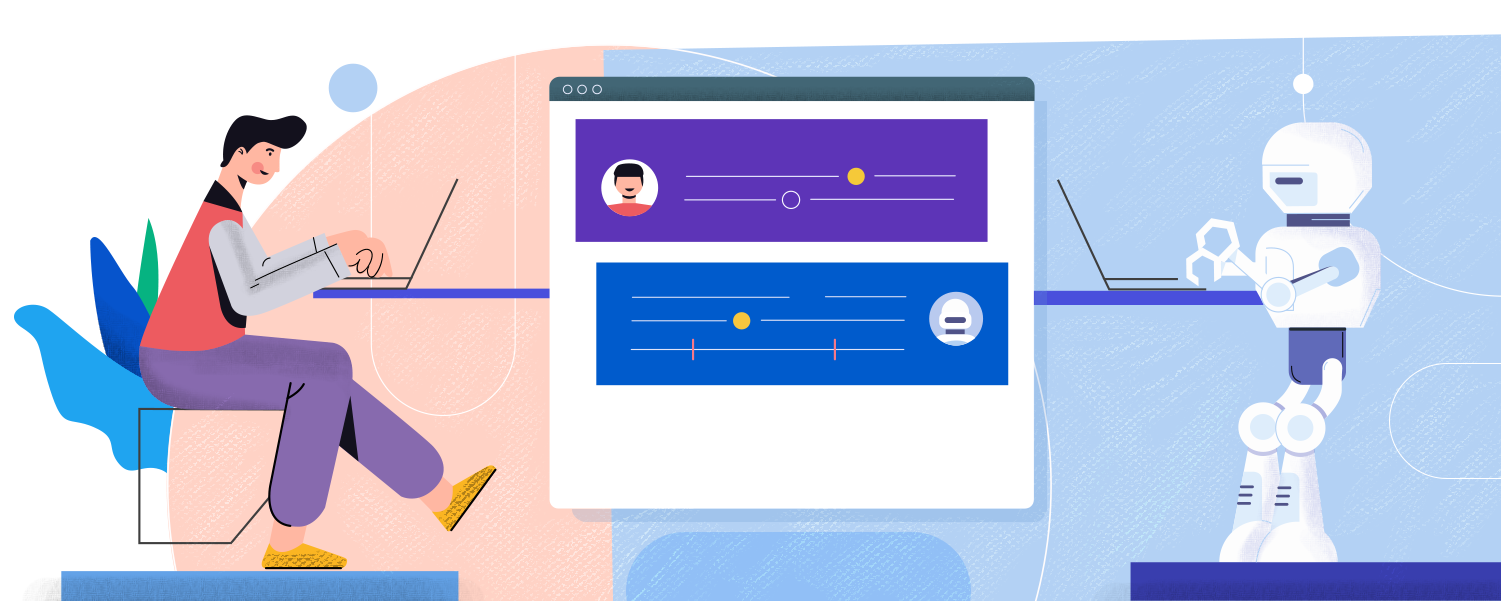
Online chatbots sound great in theory but can seem intimidating to execute. However, with the assistance of a website design and development agency, such as Bluetext, you can integrate a chat service into your current or new website design. The advantage of working with a full-service digital marketing agency is that they can analyze your search traffic patterns, help identify some common user journeys and pain points, but also style and develop a chatbot fit to your brand identity. This creates an even more seamless user experience on your site because the chatbot integrates and matches the current website, almost like a well-dressed store employee ready and able to answer any questions.
Is it time for your website to step up its support game? Consult Bluetext to find out what kind of chatbot or user experience modifications can improve your website.
Ever heard the phrase “if you’re not first you’re last”? A little extreme, but not untrue when it comes to search results. Businesses of every industry are scrambling to refine their content strategy in hopes of ranking within the first page of search results for relevant searches. However, the advice for how to do so is muddled by different strategies and outdated information. Keywords. Inbound links. Outbound links. Content velocity. Imagery alt text. Which one is it? Well, the simplest answer is all of the above…plus more. The truth is Google search algorithms are not completely transparent. If you feel like you’ve been shooting in the dark for a stronger search ranking, you’re not alone. Thankfully, Google does hint to what goes into its search algorithms and what search crawlers are prioritizing in rankings. And the latest news from the tech giant is the consideration of page experience.
Beginning mid-June, Google will be factoring Page Experience metrics into how they rank websites on the search engine’s results page. Is your website ready for this update? Before you panic over years of perfecting your organic search and content strategy, let’s break down exactly what Google means by “Page Experience”.
Despite the subjective phrase, Page Experience is actually dependent on measurable technical factors that affect how a website visitor interacts with your content. The latest update will concentrate on Web Core Vitals, but also include the following UX considerations, such as:
- Mobile-friendliness
- Safe-browsing
- HTTPS-security
- Intrusive interstitial guidelines
Breaking Down Core Vitals:
- Largest Contentful Paint: The time it takes for the main content (defined as “above the fold”, first viewport or hero zone) of a page to fully load. Websites should strive for a LCP measurement of 2.5 seconds or faster.
- First Input Delay: Reaction time of user’s first action (click, hover, tap). This measures the time it takes for a page to become fully interactive. An ideal measurement is less than 100 ms for 75% of pages.
- Cumulative Layout Shift: Time for all content on page to load and position correctly. This refers to the amount of unexpected layout shift of visual page content. For example, ever visiting a web page that loads, then jerks and shifts a couple seconds later? It’s a frustrating user experience, especially if you have begun reading or interacting with content. The ideal measurement for CLS is less than 0.1 seconds for 75% of pages.
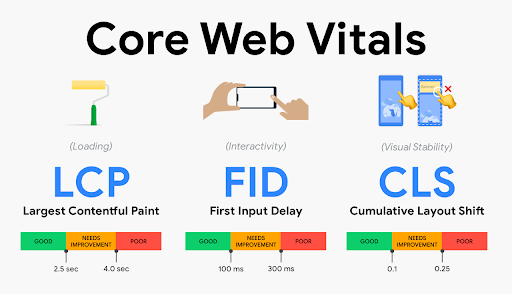
75 and Sunny Rule
Each of these benchmarks have defined benchmarks that Google recommends for 75% of pages on a website. This is what Bluetext refers to as the 75 and Sunny Rule. Especially with an older website build, it may not be achievable to reach these metrics for every page. However, if you prioritize pages by traffic level or content hierarchy, you can isolate the 75% highest value pages that should reach these measures. With these prioritized pages in mind, site speed and page experience optimization can be made by website developers to meet Google’s recommended benchmarks.
There is even rumor of visual tags being implemented on Google search results to show which websites are meeting these Core Vital criteria. It’s likely that in the near future there will be no hiding whether or not your site meets these benchmarks.
How often do I need to check my core vitals?
Well, how often do you visit the doctor? Just like your health, your website’s Page Experience should be evaluated on a regular basis. You should be checking the pulse of your website every 3-6 months to ensure everything is running smoothly and not getting dinged by Google search crawlers. There are a number of site speed and page experience tools available, each providing varying levels of detail. Google PageSpeed Insights will most prominently display core vitals with lab data (measured by single, predefined device, location, and internet connection.), field data (aggregate measure of real time user experience), diagnostics and recommended solutions. However, use caution. This tool is not known for consistent accuracy. Most experienced website development agencies will cross check site performance across multiple tests, such as: Google Search Console, Lighthouse and GTMetrix.com. Consulting a website development agency offers many advantages in optimizing your website, as they are best equipped to diagnose a problem, address and resolve an issue and conduct regular maintenance to continue optimizations.
If you’ve been ignoring your site’s technical health, there is no better time than now to ramp up your site speed and site experience to give you a competitor an edge on the search engine results page. SEO is a marathon, not a sprint. A strong SEO strategy involves a multi-faceted approach to cover the bases across multiple fronts. Keyword strategy, site speed, page experience, mobile compatibility, and more still need to be considered to reach or maintain a top search ranking. As a digital marketing agency that specializes in website development and SEO content strategy, Bluetext understands the importance of page experience in both initial site build and ongoing maintenance.
Ready to be proactive and take the pulse of your website core vitals? Contact Bluetext for a website assessment and learn how we can optimize your site to meet Google’s – and your user’s – expectations.
Have you been searching for the best way to compete in the new frontier of web design? Do you need to stand apart from your competitors in a big and bold way? Well, here’s your answer: motion design.
Motion design refers to anything from an animated logo to subtle motion on a website. But why is it worth investing in? Let’s take a look at how custom animation can yield much stronger ROI than static graphic design or leveraging stock animations.
Motion is Memorable
People are more likely to remember something that moves. People spend 2.6 times longer on webpages that have videos than ones that don’t. Motion design is ideal for marketing because it’s design + messaging + memorable movement, all in one piece of content. It’s a golden trifecta for a brand’s first impression. Think kinetic typography in hero zones, micro-interactions in UI and CTA buttons, explaining your tagline through an animated logo, or even a full segmented-explainer-video-landing-page experience. These motion integrations will not only catch a user’s eye, but sustain their attention on page long enough to peak interest.
The PLASTICS Industry Association turned to Bluetext to develop a full new brand system for their triennial trade show, NPE®. Within the new CVI, Bluetext developed a logo animation that could be incorporated into the new video assets and onto the new website. The logo, which leverages a globe design, animates each individual element of the globe to form into one, highlighting how NPE brings together plastic industry professionals from around the globe.
Motion Helps Tell Your Brand Story
While, yes, motion design gets (and keeps) attention, it also tells a story. If a user is watching and absorbing, they are tangibly engaging in your message. A static design doesn’t allow you to express your brand to its fullest potential.
For SonicWall, Bluetext incorporated a parallax effect that follows the user’s cursor as they move it across the page. This subtle movement brings the visuals to life, making the focal point really feel like it’s floating, or in the case of SonicWall, boundless. SonicWall used this effect to bring their metaphor of Boundless Cybersecurity to life and fully engage users in a big way.
Motion Brings Your Brand to a New Level
Motion design brings your brand to life in ways you could never imagine. Take static brand elements and transform them into tools for storytelling. When Appgate turned to Bluetext to establish a new brand and help bring the company to market, we took their new brand and created a 30-second product video marked exclusively with animated brand elements. It was memorable, clean, and told the story of who Appgate is and where they are heading. Appgate truly got the most out of motion design by also integrating subtle animation into their website. Pairing a memorable and exciting video with recognizable animated elements on the website truly reinforces the branding and creates a memorable experience for the user.
Interested in getting the most out of motion? Contact Bluetext to learn more about our video and animation services.
You’ve spent months working with a video design & production company to write the perfect script, find the right voice-over actor, polish your storyboard, and so much more. Now, you have a video that captures your brand essence and you want users to see it. So what’s the best way to get impressions on your video? As a premier video design & production company, we know there are countless options for getting your video in front of users.
With over 2 billion users and more than a billion hours of videos watched daily, YouTube is one of the best ways to ensure your target audience finds the video content you’ve produced. To truly understand just how powerful YouTube can be as a platform, it’s important to understand the basics. Keep reading to learn more about YouTube advertising and it’s different kinds of ad formats.
What Type of YouTube Ads are There?
YouTube Ads are controlled through the Google Ads platform, allowing advertisers to maximize their reach. Through YouTube Ads, you can decide whether you want your video to appear before, during, or after the video a user is watching. The six primary ways you can advertise through YouTube are:
- Skippable in-stream ads
- Non-skippable in-stream ads
- Video discovery ads
- Bumper ads
- Masthead ads
- Outstream Ads
Let’s take a look at each one.
Skippable In-Stream Ads
If your goal is to drive website traffic and/or conversions, this is a great option for you.
Skippable video ads play before, during, or after a video and users have the option to skip the ad after five seconds. As such, advertisers are only charged when a viewer watches 30 seconds of the video (or the full duration of the video if it’s shorter than 30 seconds) or interacts with the video. With this in mind, it’s important to keep your ad short, sweet and to the point. Don’t bury your main points 25 seconds in the video, but rather front load with interesting content that hooks a user and encourages that conversion action. Alongside skippable video ads, advertisers have the option to display a companion banner in the top right and a video overlay CTA button in the left. Needless to say, skippable video ads can be great for a lot of reasons.
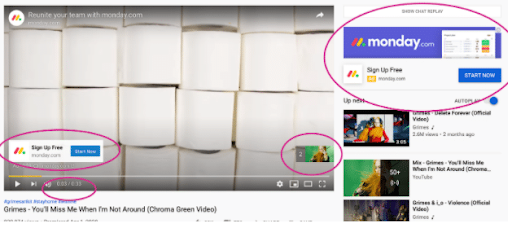
Non-Skippable In-Stream Ads
Given the nature of non-skippable in-stream ads, this is a great format if you’re aiming for a lift in brand awareness. With 76% of users skipping ads out of habit, it can be worthwhile to run ads that don’t have an option to be skipped. However, with non-skippable ads, you need to be confident that your video is strong enough to hold your audience’s attention for the full 15 seconds. Given that viewers have to watch the full video, these ads typically have higher CPMs than other formats on YouTube.

Video Discovery Ads
Video Discovery ads are best for product and brand consideration. Just like Google paid search ads, YouTube Discovery Ads display alongside organic YouTube search results. As a more native approach, if your video appears relevant to users, people are more likely to watch it. Alongside a thumbnail of the video, these ads allow for three lines of text to help provide users with more context and information. The text opportunity is great, because it ensures that a user consumes some brand messaging even if the video isn’t played. Furthermore, in the best case scenario, the description text further encourages the video play action, and eventually results in a lead or conversion.

Bumper Video Ads
Are you looking to capture viewers with a short, memorable message? Then bumper ads are for you! At only 6 seconds, bumper ads are a quick, snappy way to leave viewers wanting more. Billed on a CPM basis, these ads are best for building brand awareness, given that they are also non-skippable.

Masthead Ads
Masthead ads are a fantastic way to drive awareness for a new product, service, or event for a short period of time (i.e. a trade show). While most YouTube ads are purchased through the Google Ads auction, masthead ads are bought on a reservation basis. By buying on a reservation basis, masthead ads give you more control over your budget (buy impressions at a fixed rate), greater visibility (guarantee the placement of your ad), and better brand awareness (reach a wide audience).

Outstream Ads
Outstream ads are another great tactic for boosting brand awareness and bringing users to your site. With over 40% of YouTube viewers watching content on their mobile devices, a mobile-first ad campaign is a smart approach. Outstream ads, for example, are mobile-only and play on partner sites and apps outside of YouTube. While this might seem counterintuitive at first, this actually allows advertisers to expand their reach to publishers such as CNN and Forbes. In addition, users are more likely to view outstream video ads by over 25% when compared to instream ads.
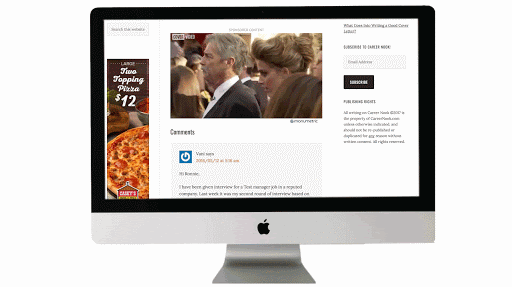
Knowing that there are so many options for YouTube ads, it can sometimes be overwhelming to know what format to select. It’s important to start with your goal, and work backward from there. Better yet, consult a digital marketing agency for advice on the best ad format and strategy for your business. If you’re interested in working with a video design & production company to create your next video or need help figuring out how to promote your videos, contact us here!
It’s no secret that any business striving for success has to find a way to differentiate themselves from their competition. The same goes for companies operating in the government contracting arena, where players big, small, old, and new, are all looking for ways to get their messages into the market uniquely.
I know what you’re thinking… so much easier said than done, right? Well, what if I told you that a solid and effective brand story is one of the most critical ingredients of a government contractor’s success? And, what if I told you that as a government contracting marketing expert that specializes in brand storytelling, Bluetext can help you significantly improve your market standing and brand goals?
Now that I’ve got your attention, keep reading to learn more about why brand storytelling is so critical in government contracting, and just what Bluetext can do for you.

So, why exactly should I care about brand storytelling?
The reality of the situation is that without a strong brand story, many government services providers look exactly alike. Strong brand storytelling can make a government contractor stand out and come to stand for something valuable to all of the stakeholders. In a trust-based industry like government contracting, a resonant message can both attract and motivate buyers to conduct business with your company.
In a world so focused on numbers, proposals, minimizing risk and technical requirements, it can be easy to forget that your buyers are still human! Yes, they want to understand your company, services, and products and see those fancy charts and data, but they also want to relate. Most proposals are going to have very similar data, and after so many they all seem the same. What won’t be the same is the emotion tied to your company‘s proposal — if you tell your story right. Customers need to recognize your brand and trust that you are the right organization to fulfill their contracts in the long term.
That’s where brand storytelling comes in to help.
Studies show that humans actually rely heavily on our subconscious feelings to make decisions and that we respond positively to the impact of stories. That’s why storytelling is such a powerful tool to help evoke positive emotions around your brand and facilitate connections with your audience. When your audience connects with your story, they will pay attention longer, want to learn more, and be more trusting of your brand.
Storytelling that is consistent with your brand allows your audience to see the how and why behind your products or services. It allows them to be enticed by your company without being explicitly aware that they were in a sales pitch. Across any industry, tolerance is low for gimmicky sales ploys. However, there is attention bandwidth to be gained for a corporate responsibility and clear values. Companies who get this right are companies who win government contracts.

Okay, I’m in. But how do I get my brand storytelling right?
Enter: Bluetext.
As a top brand development agency, we’ve worked across industries to learn the most effective ways to tell unique brand stories. We have worked with countless government contracting firms to help them tell their stories in a way that captivates audiences, leads to real, tangible business results, and establishes them as a trusted partner who can solve real-world problems.
Check out a few of our favorite examples of storytelling in government contracting below:
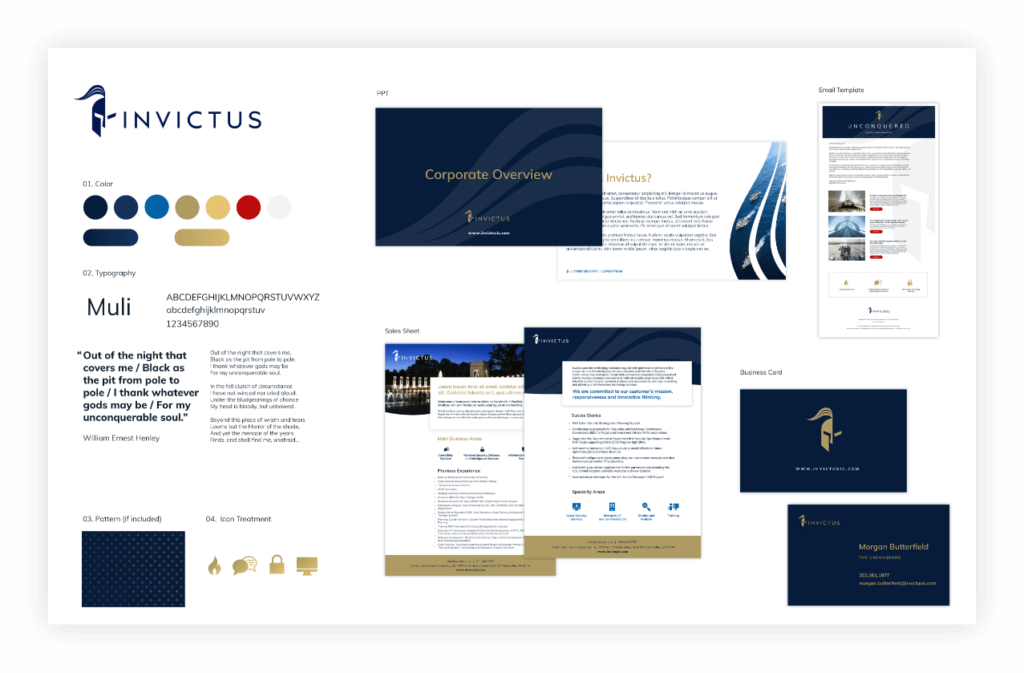 Convinced? Contact Us if you’re ready to work with a government contracting marketing firm to help tell your story.
Convinced? Contact Us if you’re ready to work with a government contracting marketing firm to help tell your story.
